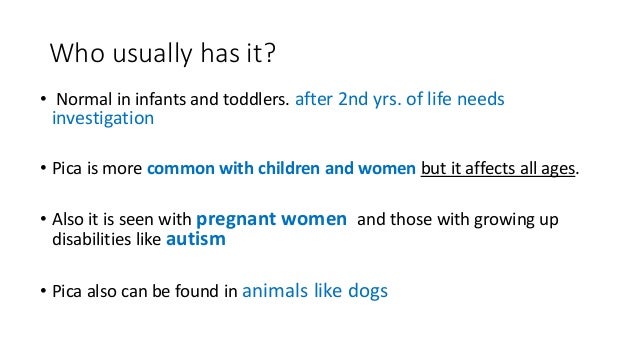

In some societies, pica is a cultural practice and is not considered to be problematic. Pica is sometimes associated with malnutrition or an iron or zinc deficiency.Ĭhildren and adults with pica disorder may eat hairballs, paint, sand, dirt, animal feces, clay, cigarette butts, paper, burnt matches, wood, chalk or other substances that are not typically considered food.Īlthough pica is observed most frequently in children, it is the most common eating disorder in individuals with developmental disabilities. Lead poisoning, for instance, is a serious problem, and lead levels should always be tested if the individual has ingested paint or paint covered objects.

Pica may be benign, or it can have life-threatening consequences depending on what is ingested. This behavior occurs at an age for which it is developmentally inappropriate, or beyond 18 to 24 months of age. Pica is typically defined as the ingestion of non-nutritive/non-food substances for a period of at least 1 month. In some cases, people with PICA disorder may also eat ice chips or ice cubes. Pica itself rarely impairs social functioning, but it often occurs in people with other mental disorders that do impair functioning (eg, autism Autism Spectrum Disorders Autism spectrum disorders are neurodevelopmental disorders characterized by impaired social interaction and communication, repetitive and stereotyped patterns of behavior, and uneven intellectual. The most common items that are craved include dirt, clay, chalk, sand, ashes, paper, paint chips, and even hair. Pica is an eating disorder most commonly observed in children, but can occur with adults as well. PICA disorder is a rare eating disorder that is characterized by an intense craving for non-food items.


 0 kommentar(er)
0 kommentar(er)
